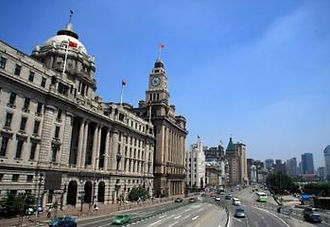
The Bund (Waitan)
The Bund (or Waitan) is the grand center of Colonial architecture in Shanghai. The former International Settlement runs along the waterfront of the Huangpu River, facing the Pudong district ('Bund' is a word of Indian derivation meaning 'embankment'). Loosely known as the "museum of international architecture," the Bund attracts visitors who are interested in the artsy side of Shanghai.
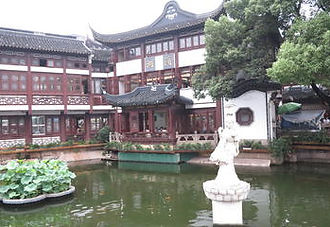
Yuyuan Garden
The name of the Yuyuan Garden means 'Garden of Peace and Comfort', a slightly ironic moniker these days. Owing to its position in the center of the Old Town and its reputation as one of China's finest and best-preserved gardens, Yuyuan is crowded to bursting point every day. And yet, somehow, it manages to maintain something of its air of serenity.
The garden has a touching history. It was built in the 16th century by a government official. He spent 20 years perfecting the garden as a haven for his father in his old age.
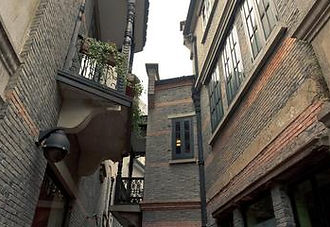
Old French Concession
Shanghai’s Old French Concession, an area once leased to the French in the Luwan and Xuhui districts of the city, is a reminder of an older Shanghai. The visitor-friendly area is packed full of beautiful colonial mansions and hotels dating back to the first three decades of the twentieth century. The French took control of the area in 1849, but it wasn’t until the 1920s when the neighborhood reached its peak of popularity as one of Shanghai’s most elite neighborhoods.
When you walk through the heart of the area on the tree-lined streets between Julu Road and Huaihai Road, you’ll find a collection of nicer restaurants and boutique shops occupying the surviving historic structures alongside Shanghai locals going about their day to day life. The French Concession is a good place to grab some food as there are so many choices; you’ll find almost everything here from Indian to French, Spanish and Thai food.
A few of the French Concession’s historic buildings now house museums, including Sun Yat-sen’s Former Residence and Zhou Enlai’s Former Residence. Both are inexpensive and will give you a better understanding of the history of the neighborhood and the city.
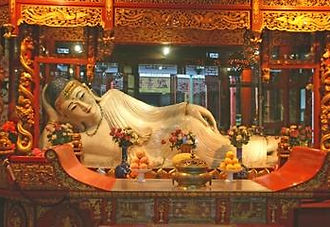
Jade Buddha Temple (Yufo Si)
Yufo Si is a working Buddhist community - one of the few in China - but the star attractions of the Jade Buddha Temple are two figures brought to Shanghai by a Burmese monk in the 19th century.
The most impressive is the sitting Buddha, a 1.9 m (6.5 ft) giant encrusted with semi-precious stones. This Buddha is sitting in the pose which captures the moment of his enlightenment by meditation. The other Buddha is smaller and in the attitude of 'happy repose', as he goes peacefully to death. Both Buddhas are carved from white jade. Facing the reclining Buddha is a large copy in stone, brought to the monastery from Singapore.
These are the main points of a visit to the temple, but take a look at the halls while you're there, particularly the Grand Hall with its golden 'Gods of the Twenty Heavens'. There's also a restaurant that serves the public, with a simple downstairs and a swankier upstairs.
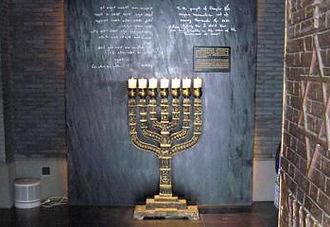
Shanghai Jewish Refugees Museum (Ohel Moshe Synagogue)
The Shanghai Jewish Refugees Museum houses the history of as many as 30,000 Jewish refugees who fled the Holocaust in Europe to settle in the Tilanqiao district of Shanghai during WWII.
The museum is made up of 3 parts: the Ohel Moshe Synagogue (Ohel Moishe), a permanent exhibition hall and a rotating exhibition hall.
The Ohel Moshe Synagogue played a central role in the lives of Jewish refugees in Shanghai during WWII. Built in 1927, it was the center of the Jewish community and one of the only two synagogues built in Shanghai at the time. In the 1930s, Shanghai was one of the only cities in the world giving shelter to the Jews fleeing Nazi persecution in Europe.
Although the synagogue is no longer fully in use, visitors to the museum can witness the fully restored building and learn about its turbulent past.

Oriental Pearl Tower and Shanghai History Museum
The Oriental Pearl TV Tower once used to be the highest building in Shanghai, and it's still up there. It's certainly one of the most hyperbolic and striking features of the horizon. Many people hate it; others have developed an odd affection for its bulbous form.
The design aside (it has been compared to the sound of pearls, large and small, dropping onto a jade plate - a conceit borrowed from a poem), the tower has some pretty impressive stats. It's 468 m (1,535 ft) high and the third highest TV tower in the world - the highest in Asia. Only Jin Mao Tower and the World Finance Center dwarf it on Shanghai's horizon.
You can take a ride up the lifts to its observation deck - choose from the reasonable height or the vertigo level.
Shanghai History Museum is located in the basement of the Pearl TV tower. It displays more than 30,000 cultural relics and artifacts covering 100 years of Shanghai’s modern history, from the opening of the port of Shanghai to the world in 1843 to the Cultural Revolution in 1949.
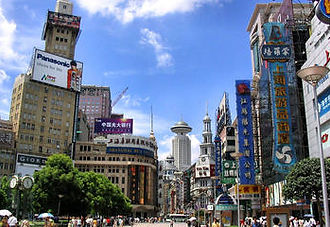
Nanjing Lu (Nanjing Road)
Nanjing Lu (Nanjing Road) is a shopping street with a history. When the British began trading in Shanghai after the Opium Wars of the 19th century, this was one of their commercial centers. In those days it was called Nanking Road, the 'k' being a more popular form of Anglicization.
Today it's not only the hectic heart of Shangai's shopping and tourism scene, but the longest shopping district in the world (6 km/3.5 mi of go-go-go). Even back in its earliest days when it served the International Settlement, it quickly became dominated by big department stores. The chains have well and truly moved in here, but really it's for the experience as much as anything that you should come.
The street is divided into two lengths, east and west. The eastern section is pedestrianized. Avoid the Western generic stuff and concentrate on what are still the Shanghai specialties - silk, jade, clocks. If it all gets a bit much, there's a sight-seeing trackless train that can take you the length of the street at night.